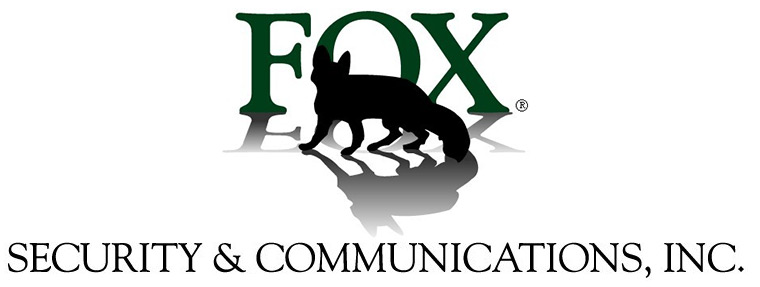Beyond the Lockdown Drill: Integrating Comprehensive Security Solutions in Schools

In the serene landscapes of Northern California, where the Pacific whispers along its rugged coastlines and the redwoods stand as timeless guardians, the safety of our school communities emerges as a paramount concern. Against this backdrop, the traditional lockdown drill, while essential, is no longer sufficient to address the complex spectrum of threats facing our educational institutions today.
The Evolving Security Landscape
In recent years, schools across Northern California, from the bustling streets of San Francisco to the quiet towns nestled in the Sierra Nevada, have faced an increasing array of security challenges. These range from unauthorized entries and vandalism to more severe threats that demand immediate and effective responses. The lockdown drill, a procedure familiar to every student, teacher, and administrator, represents only a single facet of the robust security posture necessary to protect our schools.
The Case for Comprehensive Security Solutions
Comprehensive security solutions encompass a broad range of tools and practices designed to prevent, detect, and respond to potential threats. These include intrusion alarms, access control systems, fire and life safety protocols, video surveillance, and proactive video monitoring, among others. Together, they form an integrated shield, safeguarding our students, educators, and school staff from harm.
Intrusion Alarms: The First Alert
Intrusion alarms are the initial barrier against unauthorized access, alerting school officials and local law enforcement to potential breaches. By installing sensors on doors, windows, and other entry points, schools can ensure that any attempt to enter the premises outside of normal hours triggers an immediate response, thus preventing or mitigating potential threats.
Access Control
Access control systems, like intrusion alarms, manage who enters and exits school buildings. By employing keycards, codes, or biometric technology, these systems ensure that only authorized individuals can access certain areas, significantly reducing the likelihood of unauthorized or harmful activities within school grounds.
Fire and Life Safety: Preparedness Saves Lives
Fire and life safety measures are critical components of a comprehensive school security plan. This includes not only smoke detectors and fire extinguishers but also clear evacuation routes, regular drills, and communication systems to ensure everyone knows what to do in the event of a fire or other emergencies. These measures are not just about compliance with regulations; they’re about creating a culture of safety and preparedness.
Video Surveillance: Eyes Everywhere
Video surveillance is a powerful deterrent against potential intruders and a critical tool for investigating incidents. Modern surveillance systems offer high-resolution imagery, night vision, and even AI-powered analytics to detect unusual behaviors. Schools can monitor activities in real-time by strategically placing cameras in public spaces while respecting privacy concerns, ensuring a swift response to any incident.
Proactive Video Monitoring: A Step Ahead
Proactive video monitoring, PVM for short, takes surveillance one step further.
It is a technology that enables video surveillance systems to intelligently assess an environment and notify the monitoring center of an intrusion. By employing advanced algorithms and real-time monitoring, schools can identify potential threats before they escalate. This could mean detecting an unauthorized individual on campus or identifying patterns of behavior that may indicate bullying or self-harm among students.
Implementing Comprehensive Security in Northern California Schools
The diverse landscapes and communities of the Bay Area present unique challenges and opportunities for implementing comprehensive security solutions in schools. Collaboration among school districts, local law enforcement, and security professionals is essential to tailor security measures to the specific needs and contexts of each school.
Community Engagement and Education
A crucial aspect of implementing new security measures is engaging with the school community—parents, students, and teachers—to educate them on the importance of these systems and how they work. Transparency about how data, such as video footage, is used and protected helps alleviate privacy concerns and fosters a culture of trust and cooperation.
Leveraging Technology with a Human Touch
While technology plays a critical role in modern security systems, the human element remains irreplaceable. Training for school staff on how to use security technologies effectively, how to respond to alarms, and how to execute evacuation plans is just as important as the technologies themselves. This training should be ongoing, adapting to new threats and technologies.
Policy Development and Continuous Improvement
Developing clear policies around the use of security technologies, access control, and how to respond to different types of incidents is critical. These policies should be reviewed and updated regularly, incorporating feedback from the school community and lessons learned from drills and actual incidents.
In Northern California’s ever-changing landscape, the safety of our schools requires more than just preparedness for the moment of crisis; it demands a proactive, comprehensive approach to security. By integrating advanced security solutions—ranging from intrusion alarms to proactive video monitoring—with a commitment to community engagement and continuous improvement, we can ensure that our schools remain safe havens for learning and growth. Beyond the lockdown drill lies a future where every student, teacher, and parent can feel truly secure within the walls of their schools.
Fox Security & Communications | Security Systems For School Campuses
Locally owned and operated, Fox Security specializes in home and commercial security system solutions that help save lives and protect property. Since we live in the areas we serve, we understand the needs of our customers because we share them. For more information about our services, please call the Bay Area Office at 650-631-7297 or the Arnold Office at 209-795-8103.








Leave a Reply